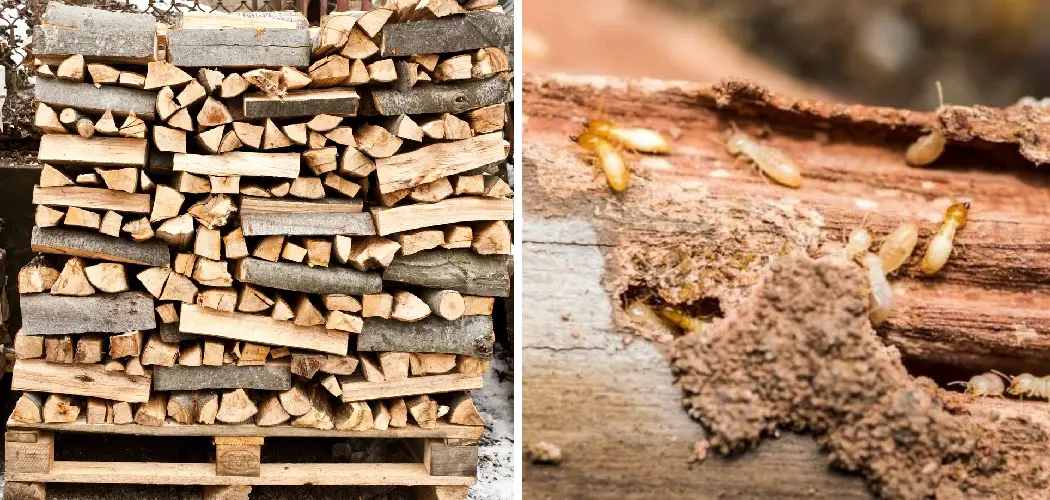Are you looking for a way to store your firewood and avoid having it infested by termites?
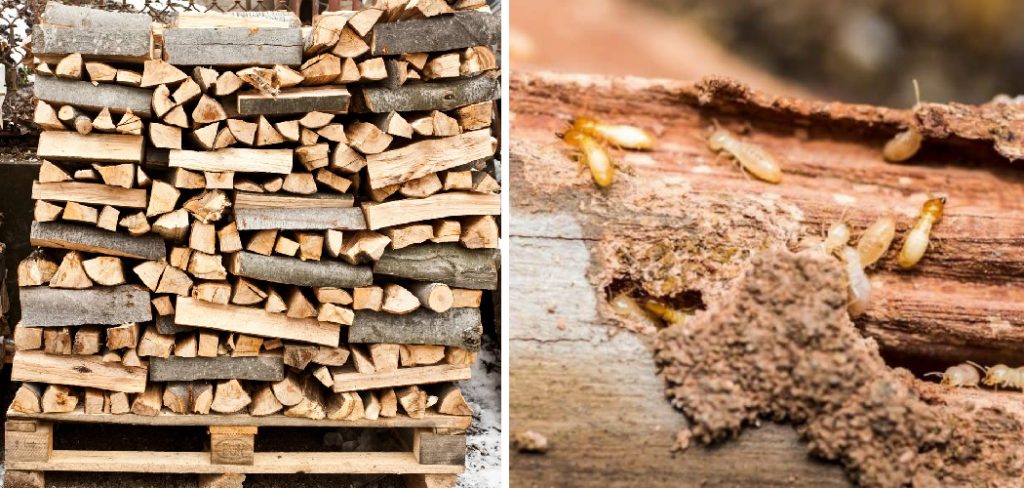
With dry, warm weather around the corner, many people are looking to get outside and enjoy outdoor activities. But before you plan for fun in the sun, consider how to store firewood this season properly.
Storing firewood correctly is essential so that you don’t attract termites or other insects—they may seem like harmless garden pests, but they can cause significant damage if a nest of them is allowed to flourish. Luckily, keeping these pests away is easy if you take a few precautions when storing your firewood!
In this blog post, we’ll explore everything you need to know about how to store firewood to avoid termites and where to store firewood safely so that termites won’t be an issue this summer.
What Will You Need?
Before starting, you’ll need a few items to store your firewood properly.
- A dry, well-ventilated area
- A firewood rack
- Cinder blocks or metal stand for the firewood to rest on
- Plastic sheeting (optional)
Once you have these items, you can store your firewood correctly!
10 Easy Steps on How to Store Firewood to Avoid Termites
Step 1: Find the Right Place
The first step in storing your firewood is to find the right area. It’s important to find a dry, well-ventilated area away from potential termite entry points. This could be in your garage, shed, or even a covered patio, as long as it is not near any soil where termites may be present.
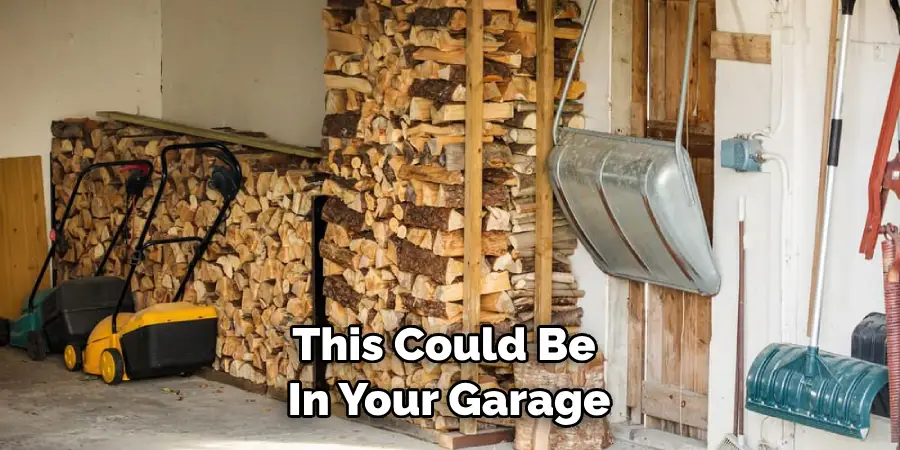
Step 2: Set Up the Firewood Rack
You can set up the firewood rack once you’ve found the right area. Make sure to assemble it correctly and level it with the ground so that your firewood does not fall off when used. If you are using cinder blocks to rest the firewood on, make sure they are set up securely and not in any danger of toppling over.
Step 3: Place the Firewood on the Rack
Next, place your logs onto the rack or stand to elevate them off the ground. This will ensure air can circulate them and that they remain dry. It’s also important not to stack the logs too high or too tightly together, as this could cause them to rot and attract pests.
Step 4: Cover the Firewood (Optional)
If you want an extra layer of protection for your firewood, consider covering it with plastic sheeting. This will help keep out moisture and pests while providing an extra layer of insulation. Remember to secure the sheeting so it does not blow away in strong winds.
Step 5: Monitor Your Firewood
Once you’ve stored your firewood, make sure to monitor it regularly. Look for signs of mold or rot and check for any pests that may have made their way onto your logs. If you see anything suspicious, it’s best to remove the logs from the rack and dispose of them safely.
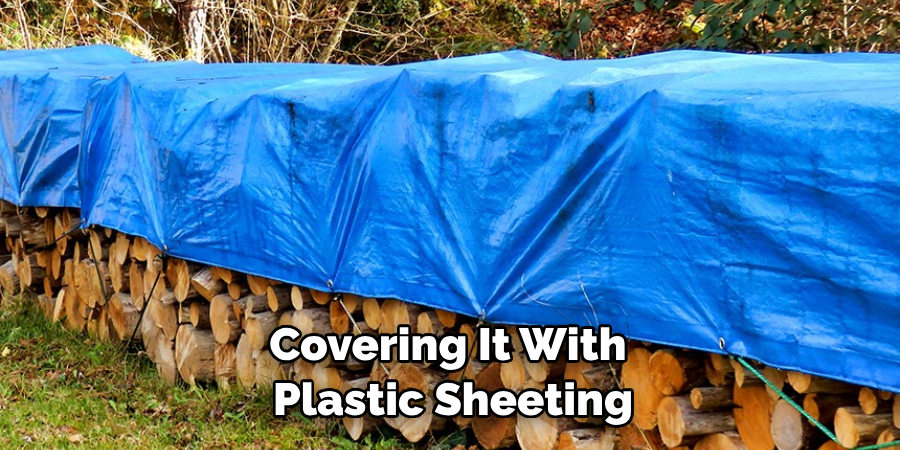
Step 6: Treat Your Firewood (Optional)
If you want an extra layer of protection for your firewood, consider treating it with a wood preservative such as borax or permethrin. These can help repel pests and protect your firewood from decay. Ensure to follow the product’s directions carefully and only apply it when your firewood is completely dry.
Step 7: Store Your Firewood Away from Your Home
It may be tempting to store your firewood close to your home, but this can increase the chances of attracting termites. Store your firewood there instead if you have a shed or other outdoor building. This will help keep termites away from your home and make it easier for you to monitor for any signs of infestation.
Step 8: Place Traps Around Your Firewood
If you’re still concerned about attracting termites, consider placing sticky traps or bait stations around where you store your firewood. These will help monitor for any termite activity and can help you spot a problem before it becomes an issue. Keep an eye on the traps for any signs of termites, and make sure to dispose of them safely if you find any.
Step 9: Remove Sap or Splinters from Your Firewood
Sap and splinters are a tasty treat for pests, so make sure to remove them from your firewood before storing it. This will help reduce the chances of attracting termites and other insects. Check your logs for any sap or splinters, and use a knife to remove them carefully.
Step 10: Enjoy!
Now that you’ve followed these steps, you can rest assured that your firewood is safely stored away from termites. All left to do now is enjoy the summer with plenty of outdoor activities! Always check on your firewood occasionally and ensure it is stored safely.
Following these steps, you can keep your firewood safe and pest-free all summer! Now that you know how to store firewood to avoid termites, you can get outside and enjoy the warmer months without worrying about destructive pests.

5 Additional Tips and Tricks
- Ensure all firewood is stored off the ground and away from moist areas. Place them in a dry, well-ventilated location such as a covered porch or shed.
- Avoid storing any firewood near the outside walls of your home to avoid any potential contact with termites and other pests.
- If you must store wood inside your home, inspect it regularly for signs of termite infestation.
- Keep the woodpile away from any vegetation in your yard; this will reduce the chances of termites or other pests invading the woodpile.
- Use treated firewood saturated with a chemical insecticide to deter insects and other pests from nesting in the wood if possible. Treated wood will last longer and remain insect free for an extended period.
Taking the necessary precautions when storing firewood can help prevent your home from becoming infested with termites. Clean up any debris or scraps of wood near your home and keep the woodpile dry and away from moist areas.
Additionally, inspect the wood regularly for signs of pests or other pest activity. Finally, consider using treated firewood to deter insects and other pests from nesting in the wood. Following these tips can help you avoid termite infestations and keep your firewood dry and free of pests.
5 Things You Should Avoid
- Avoid storing woodpiles close to the outside walls of your home.
- Don’t store firewood in damp or moist areas, inviting termites and other pests.
- Avoid piling debris or scraps of wood around your home or near the woodpile.
- Don’t use untreated wood for outdoor fires, which can attract pests.
- Avoid stacking woodpiles too close to any vegetation in your yard, as this may attract termites and insects.
In conclusion, storing firewood properly can help protect your home from termite infestations and other pest problems. Make sure you keep the wood dry, away from moist areas, and not too close to the outside walls of your home. Following these guidelines can help protect your home from infestation and keep your firewood dry and pest-free.
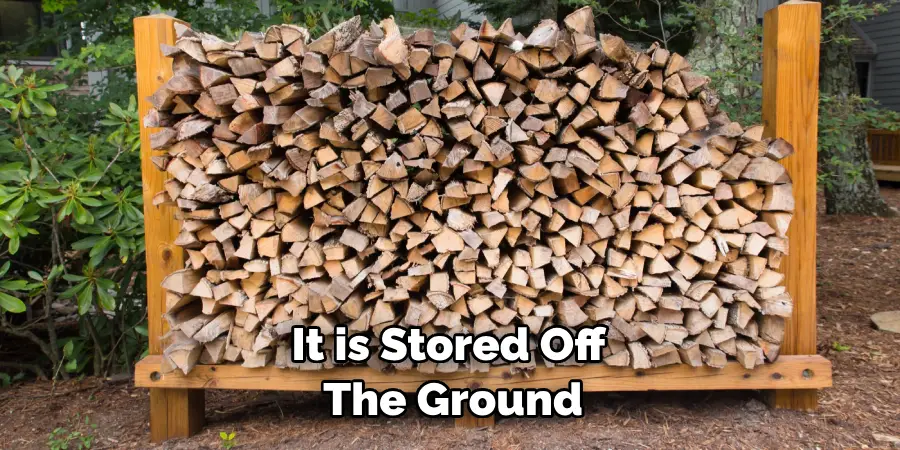
Does Painting Wood Prevent Termites?
While painting wood may make it look better, it will not prevent termites from infesting the wood. Termites often tunnel and burrow through wood regardless of how it is finished. Therefore, painting or staining your firewood does not provide any extra protection against these pests.
The best way to protect your woodpile from termite infestation is to ensure it is stored off the ground, away from moist areas, and not too close to any vegetation or outside walls. Additionally, consider using treated wood saturated with a chemical insecticide for extra protection. These precautions can help you avoid termite infestations and keep your firewood dry and pest-free.
What Kills Termites?
The most effective way to kill termites is with a professional pest control service. These services use specialized products that target insects and their colonies, eliminating them in an efficient and safe manner.
Additionally, some homeowners may use over-the-counter liquid treatments or dust as a DIY treatment method. However, it is important to note that these treatments may not be as effective as a professional service. If you suspect you have a termite infestation, it is best to consult an expert before attempting any form of treatment.
Conclusion
Storing your firewood correctly can be a rewarding experience and can save you both time and money. Having the right storage solution, such as elevated racks or boxes, can help to keep your termite problem at bay. Keeping your firewood in a dry, well-ventilated place is also important to reduce the risk of dampness induced by moisture that can attract termites.
Additionally, chemicals or natural deterrents like borax can be used to prevent termites from getting into the wood. All in all, understanding how to store firewood properly can easily avoid the nuisance of having an infestation of these parasites on or near your property and ensure boiling hot wood will always be provided when needed.
Hopefully, the article on how to store firewood to avoid termites has provided you with all the necessary information to help you keep your firewood supply dry and pest-free. Now that you know what steps to take, there’s no need to worry about termite infestations ruining your woodpile. Happy storing!

